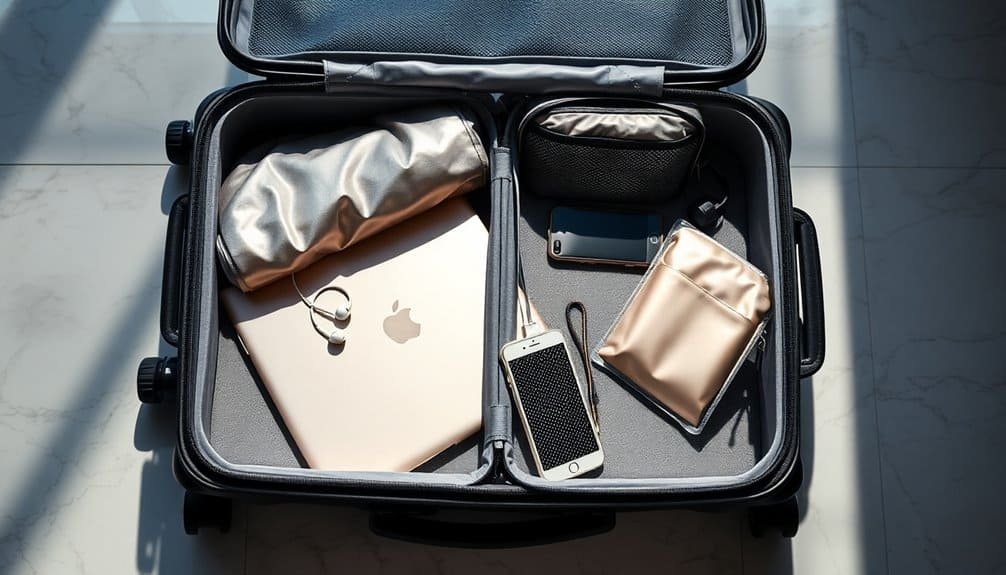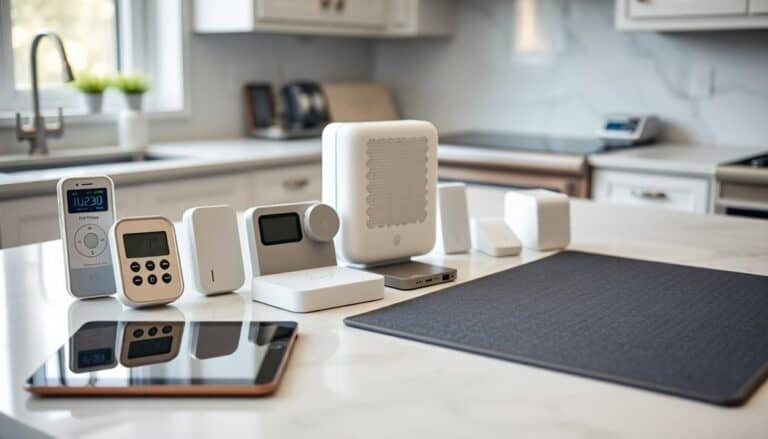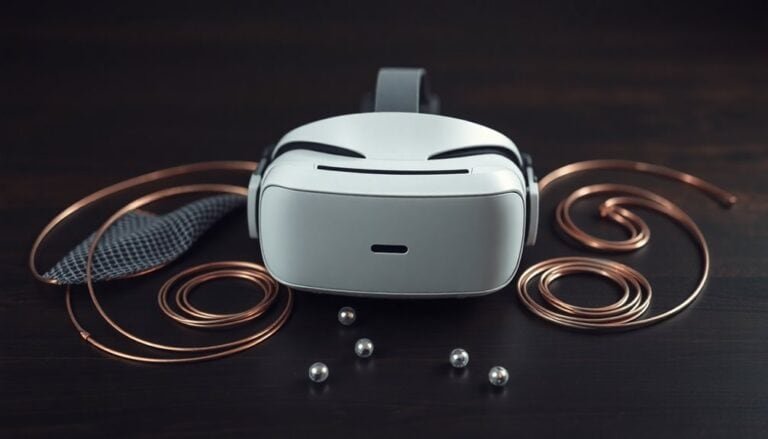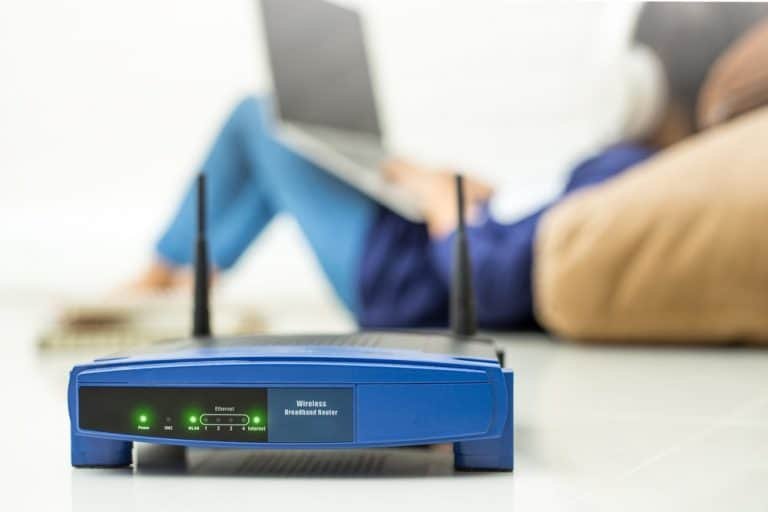Traveling Safely With Electronics (Emf Tips)

When traveling with electronics, reduce EMF exposure by using EMF blocking devices and opting for wired connections over Wi-Fi. Secure devices in in-room safes, inspect them for tampering, and request low-EMF rooms away from routers and elevators.
Follow TSA guidelines for efficient screening and consider practical tips to minimize EMF risks during travel. These strategies help safeguard against potential health risks associated with EMF.
Disclaimer: As an affiliate, I may collect a share of sales from the links on this page.
Understanding EMF Exposure in Airplanes

Understanding the sources of electromagnetic fields (EMFs) in airplanes is essential. Personal electronics, like phones and laptops, emit EMFs, especially in cramped spaces. Aircraft WiFi systems contribute to these emissions as well. Communication systems, including radio navigation, generate considerable EMFs. Instrument Landing Systems (ILS) increase electric fields during approaches. Your exposure varies by altitude, flight duration, and aircraft type. Measuring devices, like dosimeters, assess frequency bands. It’s important to note that the maximum recorded electromagnetic field value was E = 3.307 V/m for GSM 1800 frequencies, highlighting the levels of exposure pilots may face. Additionally, EMF radiation from onboard equipment can further amplify exposure levels. Be aware that cockpit areas typically have higher magnetic fields than cabin areas.
Effective EMF Protection Strategies for Travelers
When you travel with electronics, employing effective EMF protection strategies becomes essential for maintaining a safe environment.
Use EMF blocking devices, such as phone pouches and laptop pads, to considerably reduce radiation exposure. Opt for wired connections—like Ethernet cables—over Wi-Fi when possible to minimize EMF emissions.
Consider wearing shielding clothing or accessories for added protection. Utilizing EMF meters enables you to measure radiation levels in hotel rooms and identify safer locations.
Choose low-EMF accommodations, ideally rooms away from elevators and Wi-Fi routers, for a healthier travel experience. Additionally, assess EMF exposure levels in vehicles to ensure the safety of your travel environment.
These strategies help you manage your EMF exposure effectively while on the go.
Device Management During Travel

To secure your electronics while traveling, it’s essential to prepare your devices meticulously. Update your software and apps to close known vulnerabilities. Use strong, unique passwords, and enable two-factor authentication for added security. Regular updates help protect against known vulnerabilities and ensure your devices are equipped with the latest security measures. Additionally, consider reducing EMF exposure by keeping your devices at a safe distance from your body during use.
Inspect your devices for tampering before departure. Limit stored data to what’s necessary to mitigate loss. Disable Wi-Fi and Bluetooth when not in use to avoid unauthorized connections. Always connect to trusted networks and consider using a VPN.
Maintain awareness of suspicious network activity and keep devices out of sight. Finally, use encrypted storage for sensitive data and always back up important files regularly.
Smart Accommodation Choices
While selecting accommodations for travel, it’s essential to prioritize security and functionality for your electronics. Conduct room safety checks, inspecting for signs of tampering. Use in-room safes that accommodate your electronics and valuables securely.
Always connect to trusted hotel networks to prevent data breaches. Keep devices within sight to deter theft. Additionally, opting for anti-theft features in accommodation security can significantly enhance the safety of your electronics.
For EMF exposure, research hotels offering low-EMF rooms, when possible. Request rooms away from Wi-Fi routers. Consider bringing EMF testing devices or accessories that minimize exposure.
These practices guarantee your electronics remain safe and operational, enhancing your travel experience while maintaining security and health standards.
Safety Measures in Airports

Maneuvering airport security efficiently requires familiarity with established safety measures for electronics.
You must place all electronics larger than a cell phone in bins for X-ray screening. If you’re enrolled in TSA Pre✓, you won’t need to remove devices from your bag.
Verify your electronic devices are powered on during screening, as those that can’t be powered may not board. Stay informed about safety protocols, as the screening process uses non-ionizing radiation, and trained TSA personnel handle devices efficiently.
Keep your devices easily accessible to speed up the process, reducing travel time and enhancing overall security.
Shielding Techniques for Electronics
As electronic devices become more integrated into daily life, understanding effective shielding techniques is essential for their protection.
Faraday cages, for example, redistribute charges on their surfaces, canceling electromagnetic fields inside. Conductive materials like copper and aluminum block electromagnetic fields based on thickness and frequency; copper offers high conductivity while aluminum is lightweight.
Proper design consideration, including sealing gaps and grounding, enhances shielding effectiveness. Techniques utilizing reflection and absorption further reduce interference, while testing for shielding effectiveness quantifies the reduction in field strength.
Choosing the right material and design will ultimately guarantee your devices remain safe during travel.
Frequently Asked Questions
What Are the Health Effects of Long-Term EMF Exposure?
Long-term EMF exposure can lead to oxidative stress, anxiety, cognitive decline, and even sleep disturbances. You might experience headaches or fatigue, and there’s a potential link to more serious issues like neurological disorders and cancer.
Can EMF Exposure Interfere With Aircraft Instruments?
Studies show that up to 90% of aircraft instrument malfunctions can be traced back to EMF interference. Yes, EMF exposure can definitely disrupt aircraft instruments, affecting avionics and potentially compromising flight safety.
How Can I Measure EMF Levels in My Environment?
You can measure EMF levels in your environment using portable meters designed for various frequencies. Look for meters with triaxial probes and digital outputs for accurate, real-time readings to assess your exposure effectively.
Are Children More Vulnerable to EMF Exposure?
Yes, children are more vulnerable to EMF exposure due to their developing nervous systems, increased brain conductivity, and prolonged exposure times. You should take precautions to minimize their exposure to reduce potential health risks.
What Are the Global Regulations on EMF Emissions?
You should be aware that global regulations on EMF emissions vary considerably. Countries have their own standards, such as the EU’s stringent guidelines, while others may focus more on specific product safety rather than general emission limits.
Conclusion
To travel safely with electronics, be aware and proactive. Manage your devices, choose accommodations wisely, and implement safety measures to minimize EMF exposure. It’s about making informed choices, not just avoidance. With these techniques, travel smoothly without compromising safety. Keep your electronics in check, and you’ll complete your journey without issues.






